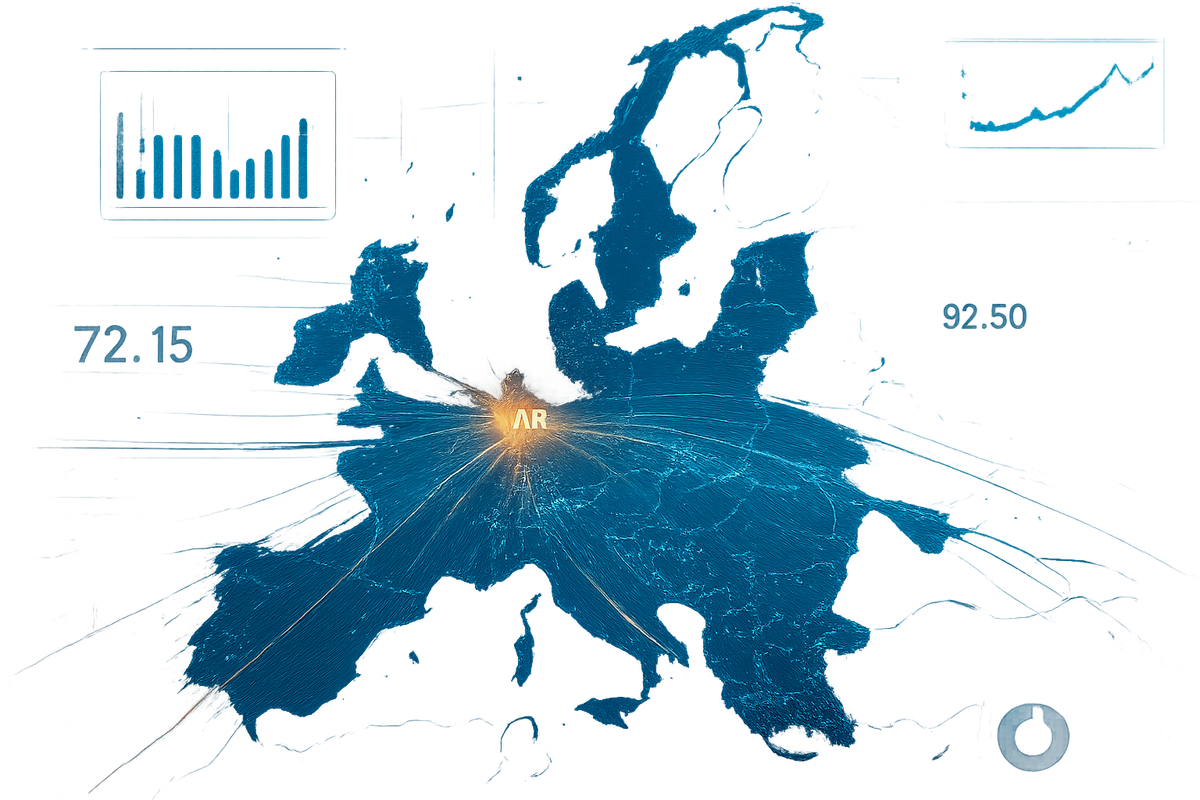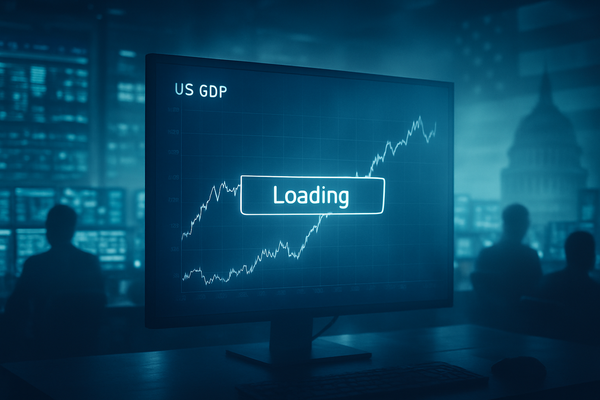Argus Revolutionizes European Gasoline Market with Intraday EBOB Pricing: A New Era of Transparency Dawns

In a significant move poised to redefine the European gasoline market, Argus Media today, October 30, 2025, officially launched its groundbreaking intraday EBOB European gasoline pricing. This innovative offering promises to usher in an unprecedented era of transparency and visibility, providing market participants with real-time insights into the dynamic fluctuations of gasoline values across the continent. The introduction of these granular price assessments is a direct response to a growing industry demand for more immediate and precise market data, aiming to enhance decision-making and risk management capabilities for a wide array of stakeholders.
The immediate implications of this launch are profound. By offering snapshots of European gasoline values four times during the trading day—at 09:30, 12:00, 14:00, and 16:30 UK time—Argus is effectively pulling back the curtain on a market traditionally reliant on end-of-day assessments. This real-time visibility, derived from the latest information from the fob AR (Amsterdam-Rotterdam) spot gasoline barge market and real-time Eurobob swap values, will empower traders, refiners, and distributors with the tools needed to react swiftly to market shifts, optimize trading strategies, and mitigate potential exposures in an increasingly volatile global energy landscape.
Unpacking the Intraday Revolution: A Closer Look at Argus's Market Enhancement
The launch of Argus's intraday EBOB European gasoline pricing marks a pivotal moment in the evolution of energy commodity markets. This initiative is not merely an incremental update but a fundamental shift in how European gasoline values are perceived and traded. Historically, participants in the European gasoline market have largely relied on end-of-day assessments, which, while comprehensive, often lagged behind the rapid pace of intraday trading activity. This created a knowledge gap, making it challenging for market players to accurately gauge real-time market sentiment and price discovery.
Argus's new methodology addresses this directly by providing four distinct price assessments throughout the trading day. These assessments are meticulously calculated using a blend of up-to-the-minute data from the highly liquid fob AR spot gasoline barge market and the dynamic real-time Eurobob swap values. This hybrid approach ensures that the intraday prices reflect the most current supply and demand dynamics, offering a more accurate and actionable representation of market conditions. Furthermore, Argus is assessing both non-oxy and oxy grades of Eurobob gasoline, acknowledging the continued importance of blendstocks for both E10 and E5 gasoline in Europe and internationally, particularly for regions like West Africa, where Argus's Eurobob prices are frequently referenced in deals.
The timeline leading up to this launch highlights a consistent drive towards greater market sophistication. As global energy markets have become increasingly interconnected and susceptible to rapid geopolitical and economic shifts, the demand for more frequent and transparent pricing mechanisms has intensified. Argus (LSE: ARG), a leading independent provider of energy and commodity price information, recognized this evolving need and has been working to develop a robust solution that could withstand the rigors of real-time market assessment. This launch on October 30, 2025, culminates extensive development, stakeholder consultations, and rigorous testing to ensure the accuracy and reliability of the new pricing mechanism. Initial market reactions have been largely positive, with many participants expressing optimism about the potential for improved efficiency and reduced informational asymmetry.
Key players and stakeholders involved in this development span the entire European gasoline value chain. This includes major oil companies such as Shell (LSE: SHEL) and BP (LSE: BP), independent trading houses like Vitol and Trafigura, refiners, and downstream distributors. These entities are not just beneficiaries but have also been crucial in providing feedback and expressing the need for such a tool. The collective engagement underscores the industry-wide recognition of the critical role that enhanced transparency plays in fostering a more efficient and equitable trading environment.
Market Movers: Who Wins and Who Loses in the New Transparent Landscape
The introduction of Argus's intraday EBOB European gasoline pricing is set to redistribute advantages and challenges across the market, creating clear winners and potentially requiring strategic adjustments from others. The primary beneficiaries will be market participants who thrive on real-time data and possess the analytical capabilities to swiftly integrate these new insights into their trading and operational strategies. This includes agile trading desks within major oil companies and independent trading houses that can leverage the intraday assessments to optimize their buying and selling positions, hedge against price volatility more effectively, and identify arbitrage opportunities that were previously obscured by less frequent data.
Companies with sophisticated risk management frameworks are also poised to win. The ability to track price movements throughout the day allows for more dynamic adjustment of hedging strategies, reducing exposure to sudden market swings. This enhanced risk mitigation is particularly valuable for refiners, such as TotalEnergies (EPA: TTE) and Eni (BIT: ENI), who manage significant inventories and are constantly exposed to commodity price fluctuations. Better visibility means they can make more informed decisions about crude purchases, refinery runs, and product sales, potentially leading to improved margins and reduced financial risk. Downstream distributors, especially those with significant operations in regions like West Africa that reference Argus Eurobob prices, will also benefit from greater clarity on their procurement costs, enabling more accurate pricing for their customers and better inventory management.
Conversely, entities that rely on informational asymmetry or operate with less sophisticated data analytics capabilities may find themselves at a disadvantage. While increased transparency generally benefits the market as a whole, it can erode the edge held by players who historically profited from earlier or more exclusive access to price-moving information. Smaller, less technologically advanced market participants might struggle to keep pace with the rapid influx of intraday data, potentially leading to delayed reactions and suboptimal trading decisions. However, this also presents an opportunity for technology providers specializing in data integration and real-time analytics to offer solutions that help these players adapt and thrive in the new environment.
Furthermore, companies that have historically benefited from wider bid-ask spreads due to less transparent pricing may see those spreads narrow. While this is a positive development for overall market efficiency, it could compress margins for some intermediaries. The increased competition stemming from greater transparency will necessitate a focus on operational efficiency, cost management, and superior trading execution rather than relying on informational advantages. Ultimately, the new landscape favors those who embrace data-driven decision-making and are willing to invest in the technology and expertise required to harness the full potential of intraday pricing.
Wider Significance: A Catalyst for Market Evolution and Global Alignment
The launch of Argus's intraday EBOB European gasoline pricing transcends a mere product update; it represents a significant step in the broader evolution of energy commodity markets towards greater digitalization, transparency, and global alignment. This move fits squarely within a prevailing industry trend where market participants are increasingly demanding more granular, real-time data to navigate complex and rapidly changing global supply chains. As technology advances, the expectation for instant access to critical market intelligence grows, and Argus's initiative positions it at the forefront of this data-driven transformation.
The potential ripple effects on competitors and partners are substantial. Other price reporting agencies (PRAs) will likely face pressure to innovate and offer similar intraday assessments to remain competitive. This could lead to a healthy competition among PRAs, ultimately benefiting the market through even more comprehensive and diverse data offerings. For partners within the trading ecosystem—such as exchanges, brokers, and data vendors—the Argus launch creates new opportunities for integration and value-added services built upon this enhanced pricing data. It could also spur further development of algorithmic trading strategies that leverage these real-time data feeds, leading to even more efficient price discovery.
From a regulatory and policy perspective, increased transparency in commodity markets is generally welcomed. Regulators often advocate for measures that reduce market manipulation potential and enhance fair competition. The intraday pricing, by shedding more light on transactional activity, contributes to a more robust and auditable market environment. While direct regulatory mandates for such specific intraday pricing may not be immediately forthcoming, the industry's proactive adoption of such measures aligns with broader regulatory objectives for market integrity and efficiency. This could potentially influence future regulatory discussions around data reporting standards in energy markets.
Historically, the evolution of commodity pricing has always moved towards greater transparency as markets mature and technology allows. We've seen similar shifts in other major commodity benchmarks, such as crude oil and natural gas, where the introduction of more frequent assessments and futures contracts significantly improved price discovery and liquidity. The comparison to Argus's recently launched MEBOB price in the Mideast Gulf and the established RBOB in the US highlights a global trend towards harmonizing and enhancing gasoline pricing benchmarks. This convergence facilitates simpler global comparisons, enabling traders to better identify regional price discrepancies and optimize global supply chains, further integrating the European market into the global energy trading framework.
The Road Ahead: Navigating Opportunities and Challenges
The introduction of Argus's intraday EBOB European gasoline pricing sets the stage for a dynamic period of adaptation and innovation within the market. In the short term, we can expect a learning curve as market participants integrate these new data streams into their existing workflows and trading models. This will involve updating analytical tools, recalibrating risk management systems, and training personnel to effectively utilize the more frequent price assessments. Initial volatility might occur as the market adjusts to the increased transparency, but this is likely to stabilize as participants become more adept at processing and reacting to the intraday data. We may also see a temporary increase in trading activity as participants test new strategies based on the enhanced information.
Looking further ahead, the long-term possibilities are transformative. The enhanced transparency could foster greater liquidity in the European gasoline spot and derivatives markets, as participants gain more confidence in the real-time valuation of assets. This could attract new investors and increase overall market depth. Potential strategic pivots will be required, particularly for companies that have traditionally operated with less real-time market intelligence. They may need to invest heavily in data analytics, automation, and trading technology to remain competitive. This could lead to partnerships with fintech firms or specialized data providers.
Market opportunities will emerge for those who can develop sophisticated algorithms and automated trading systems that capitalize on the intraday price movements. This could include high-frequency trading firms and quantitative hedge funds. Additionally, the improved global comparability with benchmarks like RBOB and MEBOB opens up new avenues for inter-regional arbitrage and more efficient global supply chain optimization for multinational energy companies. Challenges will primarily revolve around the initial investment required to adapt to the new data environment and the increased pressure on margins due to heightened competition and reduced informational advantages. Cybersecurity also becomes an even more critical concern, as real-time data flows demand robust protection.
Potential scenarios and outcomes include a more efficient and less fragmented European gasoline market, where price discovery is faster and more accurate. This could lead to a reduction in price discrepancies across different regions and a more uniform pricing structure. Another outcome could be the development of new derivative products that specifically leverage the intraday pricing, offering more granular hedging opportunities. Ultimately, the market is poised for a period of accelerated evolution, driven by the power of real-time information.
Conclusion: A New Dawn for European Gasoline Transparency
Argus's launch of intraday EBOB European gasoline pricing on October 30, 2025, marks a watershed moment for the European energy markets, fundamentally reshaping the landscape of gasoline trading. The key takeaway is the dramatic enhancement of market transparency and visibility, moving from a historical reliance on end-of-day assessments to dynamic, real-time insights available four times throughout the trading day. This shift is not merely an upgrade but a strategic response to the market's evolving demand for more granular data, promising improved price tracking, more robust risk management, and simplified global comparability with other major gasoline benchmarks.
Moving forward, the European gasoline market is set to become more efficient, competitive, and data-driven. Companies that embrace this new era by investing in advanced analytics, sophisticated trading technologies, and agile risk management strategies will be best positioned to capitalize on the opportunities presented by heightened transparency. While some traditional advantages based on informational asymmetry may diminish, the overall market health is expected to improve, fostering greater liquidity and more equitable trading conditions for all participants.
For investors, the significance of this development lies in its potential to reduce market opacity and provide a clearer picture of value in the energy sector. It underscores a broader trend towards digitalization and real-time data in commodity markets, which can lead to more informed investment decisions and potentially less volatile asset valuations over time. Investors should watch for how major oil companies (e.g., Shell (LSE: SHEL), BP (LSE: BP), TotalEnergies (EPA: TTE)) and independent trading houses adapt their strategies in the coming months, particularly concerning their hedging practices and their adoption of new trading technologies. The market's reaction to the increased data flow, and any subsequent shifts in trading patterns or liquidity, will provide crucial insights into the lasting impact of this significant market enhancement.
This content is intended for informational purposes only and is not financial advice



